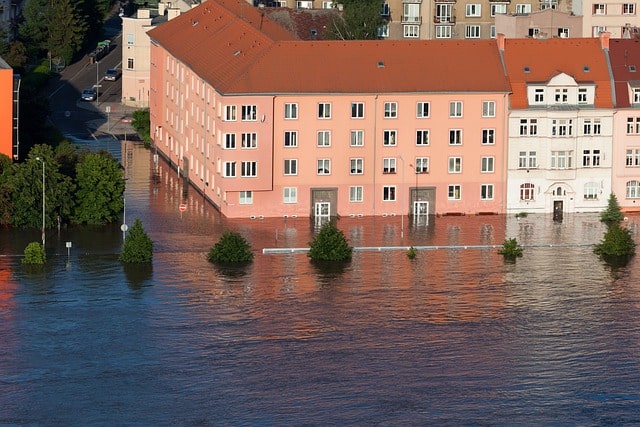AEW has published its latest climate risk research report which explores how physical climate change, in particular river floods and rising sea levels, will impact European real estate returns, and the importance of a proactive investment approach.
The report looks at 196 market segments across Europe.
In this report, AEW provides an updated estimate of the impact of physical climate-related hazards on European real estate investment returns. This is a follow-up from AEW’s Jun-21 report on climate-informed real estate returns in Europe as we adopt the RCP 4.5 climate change scenario. In addition to Munich Re, AEW adds a new data partner with The Climate Company (TCC).
First the good news, despite 75% of the covered 196 market segments being affected by river flood, the average annual expected loss from this river flood risk is a relative modest 0.7 bps pa of prime capital value from an insurance perspective.
At 1.4 bps pa French markets post double the European country average risk of river flood. Across sectors, residential’s expected loss from river flood risk is highest, albeit at a modest 1.1 bps pa.
At an sector average of 3.6 bps pa, Lyon is the most affected city. These averages hide extreme results for individual market segments as highlighted by the near 13 bps pa loss for Lyon residential located at the confluence of the Rhone and Saone rivers.
These extreme results for specific areas and even on a micro location and elevation level mean that investors cannot ignore this risk and should adopt an active acquisition screening and portfolio monitoring approach across their investment strategies.
Second, in terms of sea level rise, AEW estimates the average annual expected loss for sea level rise at 1.3 bps across the affected 47 (of 196) market segments.
AEW said this is based on a pragmatic analytical approach using European sector specific river flood expected losses (for flooded areas only) and high precision data on underlying surface areas affected by sea level rise.
Unsurprisingly, the Netherlands are most exposed to sea level rise. Rotterdam and Amsterdam have estimated sea level rise losses at above 2 bps pa. level rise cities. Dublin, Copenhagen and The Hague complete the top-5 most exposed to sea level rise cities.
Thirdly, the company estimates the annual expected losses for both river flood and sea level rise combined at a very modest 0.8 bps pa across our entire 196 market coverage. This is due 38 of our 196 segments having no exposure to either and the combined average is further impacted by 10 markets exposed to sea level rise only and 111 of markets affected by river flood risk only and 37 by both.
”Even when we combine river flood and sea level rise expected losses for the 37 market segments that are exposed to both risks, our results shows only a modest average loss of 1.7 bps of prime capital value pa,” the report notes.
”Our focus on river flood and sea level risks is justified by the limitations of available data making a proper quantification in terms of expected loss not yet feasible for other climate-related hazards, such as drought, heat and precipitation stress etc. It would help to have more data standardisation on physical risks and resolve inconsistencies between data providers as well as improved data on subsidence – possibly the most expensive physical climate risk – and the widespread risk of urban heat islands.”
Hans Vrensen, Managing Director, Head of Research & Strategy, at AEW in Europe, commented: “After an in-depth analysis of river flood and sea level rise risks across 196 European markets, we conclude that the combined average annual expected loss from both risks is a relative modest 0.8 bps of prime capital value pa. This is partly due to 38 of 196 markets not being affected by either risk, which brings down the overall average loss.
“However, this market average loss estimate does not reflect micro locations or individual building characteristics and hides some extreme market results. Some segments show high risks at near 12bps pa, such as Lyon prime residential, which is expected to be the most at risk market to river flooding. This means that investors should consider adopting an active screening or monitoring approach.
“More work is still needed to resolve inconsistencies between existing data sources as well as uncovering data to help estimate the risks from urban heat islands and subsidence. This is when building foundations are damaged by clay soils affected by droughts — possibly the most expensive physical climate risk.”





















